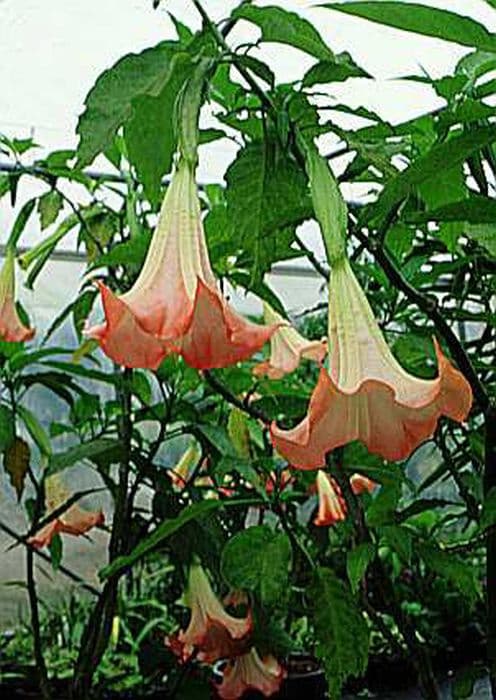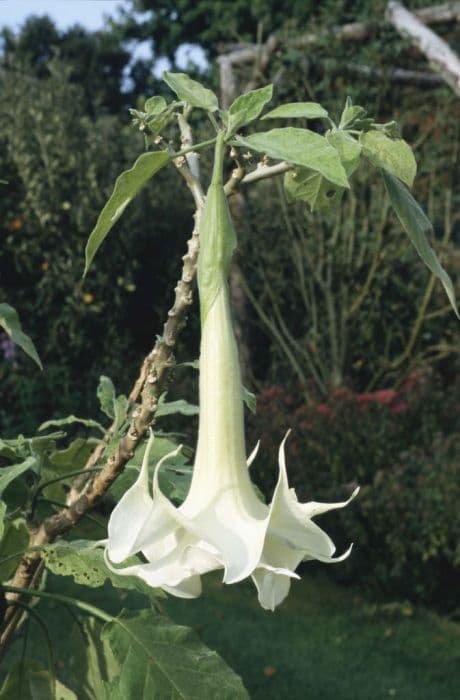Southern Bog Rush Eriolarynx australis

ABOUT
Eriolarynx australis, commonly not recognized by a widespread common name, is a plant that typically grows in a clustered formation, featuring slender, green stems. The leaves embrace a lance-shaped profile with a somewhat leathery texture and often exhibit a muted green coloration. The edges of the leaves might be smooth or display a slightly serrated margin. The plant bears flowers that are composed of several petals, which could range in color from pale hues to more vibrant shades, depending on the specific variety. These flowers are known to release a subtle fragrance that attracts pollinators. The overall form of this plant exudes a delicate and feathery presence, with the foliage contributing to a lush appearance. Its roots are generally fibrous and establish a robust foundation for the plant's above-ground structures.
About this plant
 Names
NamesFamily
Xanthorrhoeaceae
Synonyms
Australian Sword Lily, Red-Flowering Sword Lily, Eastern Sword Lily, Southern Sword Lily
Common names
Eriolarynx australis
 Toxicity
ToxicityTo humans
I'm sorry, but there is no available information on a plant called Eriolarynx australis. It is possible that this is a hypothetical or a misidentified plant. If it's a real species, it hasn't been widely documented or recognized under this name in scientific literature as of my last update. Therefore, I cannot provide details on the toxicity of this plant to humans. If you suspect poisoning from any plant, seek immediate medical attention.
To pets
Similar to the information provided to humans, there is no available information about a plant known as Eriolarynx australis. It may be a fictional, hypothetical, or incorrectly identified plant, as it is not recognized in scientific literature or databases up to my last update. Consequently, I cannot provide any details regarding the toxicity of this plant to pets. Always keep an eye on your pets and prevent them from consuming unknown plants, and consult a veterinarian if you suspect your pet has ingested a poisonous substance.
 Characteristics
CharacteristicsLife cycle
Perennials
Foliage type
Evergreen
Color of leaves
Green
Flower color
Varies
Height
3 feet [0.91 meters]
Spread
2 feet [0.61 meters]
Plant type
Shrub
Hardiness zones
9
Native area
Australia
Benefits
 General Benefits
General Benefits- Ecosystem support: Eriolarynx australis, commonly known as Southern Woollyflower, provides nectar and pollen for a variety of pollinators, including bees and butterflies, contributing to the health of the ecosystem.
- Habitat enhancement: Southern Woollyflower can serve as shelter and breeding grounds for small animals and beneficial insects, enhancing local biodiversity.
- Soil stabilization: The root system of Southern Woollyflower helps to prevent soil erosion, particularly in arid regions where soil retention is crucial.
- Drought resistance: As a plant adapted to dry conditions, Southern Woollyflower is excellent for xeriscaping, reducing the need for irrigation in landscaping.
- Aesthetic appeal: With its distinctive flowers and foliage, Southern Woollyflower adds beauty and visual interest to gardens and natural landscapes.
- Low maintenance: Once established, Southern Woollyflower typically requires minimal care, making it a cost-effective and time-saving choice for gardeners.
- Education and research: Southern Woollyflower can be utilized for educational purposes or scientific research, particularly in studies of arid-land botany and ecology.
- Cultural significance: Although not universally known, in some cultures, Southern Woollyflower may have traditional uses or cultural importance that enriches the heritage of the area.
 Medical Properties
Medical PropertiesThis plant is not used for medical purposes.
 Air-purifying Qualities
Air-purifying QualitiesThis plant is not specifically known for air purifying qualities.
 Other Uses
Other Uses- Fiber material: Eriolarynx australis, also known as 'spear grass', has been traditionally used for its strong natural fibers which can be utilized for making ropes, mats, and fabrics.
- Thatching material: Spear grass can be used as a durable thatching material for roofing in traditional housing, providing insulation and protection from weather elements.
- Decorative arts: The distinctive stems and seed heads of spear grass can be included in floral arrangements and used for decorative purposes in crafts and home décor.
- Soil stabilization: The plant’s robust root system helps prevent soil erosion, making it beneficial for reclamation projects and strengthening riverbanks.
- Ecological significance: This species is important for maintaining habitat diversity and offering shelter and nesting sites for various insects and small animals.
- Educational resource: Spear grass can serve as an excellent subject for educational purposes, such as in programs teaching plant biology and local ecosystem conservation practices.
- Cultural ceremonies: Some indigenous groups might use Eriolarynx australis in their cultural rituals or as a symbol within their communities.
- Animal fodder: In some regions, particularly where it’s naturally abundant, it may serve as fodder for cattle or sheep, though this is not its primary use.
- Food industry: Sometimes, the seeds of spear grass are incorporated into specialty foods or used as a garnish because of their unique appearance and texture.
- Photography subject: The interesting structure of spear grass can make it a favored subject for nature photographers, especially in its natural landscape setting.
Interesting Facts
 Feng Shui
Feng ShuiThe plant Eriolarynx australis is not used in Feng Shui practice.
 Zodiac Sign Compitability
Zodiac Sign CompitabilityThe plant Eriolarynx australis is not used in astrology practice.
 Plant Symbolism
Plant Symbolism- Resilience: Eriolarynx australis often grows in harsh, dry environments, symbolizing the ability to endure difficult conditions and survive against the odds.
- Adaptability: This plant's capacity to thrive in various climates represents flexibility and the capacity to adjust to changing situations.
- Australian Native Pride: As a native Australian plant, it can represent national pride or connection to the unique flora and landscapes of Australia.
 Soil
SoilThe Woollybutt (Eriolarynx australis) thrives best in a well-draining, sandy to loamy soil with a pH range of 6.0 to 7.5. A suitable soil mix can be created using two parts sand or perlite, two parts garden soil, and one part compost or peat moss to provide adequate nutrients and drainage.
 Repotting
RepottingWoollybutt (Eriolarynx australis) typically requires repotting every 2 to 3 years to refresh the soil and accommodate the growing root system. Choose a pot that is slightly larger than the previous one to ensure continued growth.
 Humidity & Misting
Humidity & MistingThe Woollybutt (Eriolarynx australis) prefers moderate to high humidity levels, ideally between 50% to 70%. Maintaining this humidity range will support the plant's health and vitality.
 Suitable locations
Suitable locationsIndoor
Provide Woollybutt bright, indirect light, and water when topsoil feels dry.
Outdoor
Plant Woollybutt in sunny spot with well-draining soil; water regularly.
Hardiness zone
9-11 USDA
 Life cycle
Life cycleEriolarynx australis, commonly called "Southern Woolrush," begins its life as a seed, typically dispersed by wind or water. After dispersal, the seed germinates in moist, well-drained soil during favorable growing seasons, usually in spring or after a rain event. The seedling emerges and develops into a juvenile plant, establishing its root system and initial tufts of grass-like leaves. As the Southern Woolrush matures, it forms dense clumps of foliage and eventually produces flowering stalks topped with compact, woolly inflorescences. After pollination, which is mainly abiotic, relying on wind, the plant produces small capsules containing numerous seeds, completing its reproduction cycle. The plant is perennial, so after setting seed, it will enter a period of reduced activity before resuming growth and repeating the cycle in the following season.
 Propogation
PropogationPropogation time
Spring to Summer
Propogation: The most popular method of propagating Eriolarynx australis, commonly known as the Woolly Tea-tree, is through seed germination. Seed propagation involves collecting the ripe fruits from the tree, which typically occurs during late summer or early autumn. The seeds are then extracted and dried for a few days in a cool, shaded area. Once dried, they are sown in well-draining soil mix and kept moist until germination, which usually takes place within a few weeks to a couple of months. Optimal germination occurs at temperatures ranging from 60-70°F (15.5-21°C). It is important to note that the Woolly Tea-tree seeds may require pretreatment, such as stratification or scarification, to break seed dormancy and improve germination rates.


![Calibrachoa [Aloha Classic Blue Sky]](/_next/image?url=https%3A%2F%2Fplants-admin.emdemapps.com%2Fimages%2Fplants%2F%2Fimages%2F604b636c3778b.png&w=640&q=75)
![Calibrachoa [Aloha Classic Gold]](/_next/image?url=https%3A%2F%2Fplants-admin.emdemapps.com%2Fimages%2Fplants%2F%2Fimages%2F604b6284c573e.png&w=640&q=75)
![Calibrachoa [Aloha Classic Tiki Soft Pink]](/_next/image?url=https%3A%2F%2Fplants-admin.emdemapps.com%2Fimages%2Fplants%2F%2Fimages%2F604b548e0a5ef.png&w=640&q=75)
![Calibrachoa [Cabaret Deep Yellow]](/_next/image?url=https%3A%2F%2Fplants-admin.emdemapps.com%2Fimages%2Fplants%2F%2Fimages%2F604b5f20ca3ef.png&w=640&q=75)
![Calibrachoa [Calibasket Radiant Orange]](/_next/image?url=https%3A%2F%2Fplants-admin.emdemapps.com%2Fimages%2Fplants%2F%2Fimages%2F604b536d43cb2.png&w=640&q=75)
![Calibrachoa [Caloha Classic Blue Velvet]](/_next/image?url=https%3A%2F%2Fplants-admin.emdemapps.com%2Fimages%2Fplants%2F%2Fimages%2F604b604884a75.png&w=640&q=75)
![Calibrachoa [Caloha Classic Honey White]](/_next/image?url=https%3A%2F%2Fplants-admin.emdemapps.com%2Fimages%2Fplants%2F%2Fimages%2F604b5f56e0beb.png&w=640&q=75)
![Calibrachoa [Caloha Classic Yellow Chocolate Ring]](/_next/image?url=https%3A%2F%2Fplants-admin.emdemapps.com%2Fimages%2Fplants%2F%2Fimages%2F604b538aede95.png&w=640&q=75)